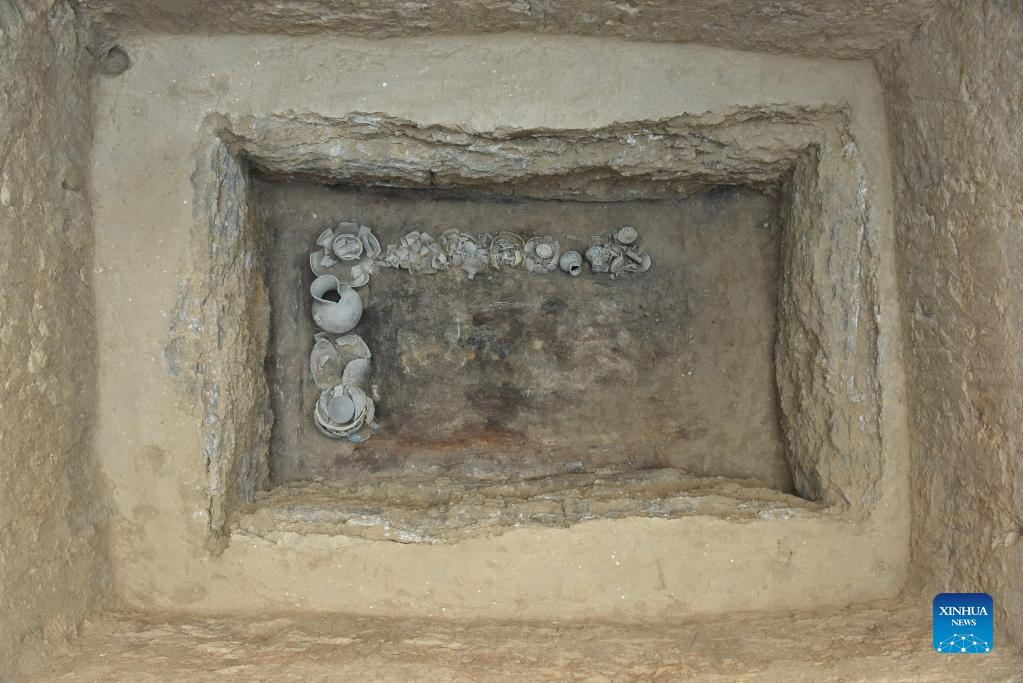Ancient tombs found in north China's Shanxi

File photo provided by the Shanxi archaeology research institute shows the relics items in an excavation site in Shuozhou, north China's Shanxi Province. Archaeologists have discovered more than 400 tombs dating back to the Eastern Zhou Dynasty (770 B.C.-256 B.C.) and the Han dynasty (202 B.C.-220 A.D.) in north China's Shanxi Province. The excavation site in the city of Shuozhou spans 8 hectares, according to the Shanxi archaeology research institute. (Xinhua)
TAIYUAN, Jan. 17 (Xinhua) -- Archaeologists have discovered more than 400 tombs dating back to the Eastern Zhou Dynasty (770 B.C.-256 B.C.) and the Han dynasty (202 B.C.-220 A.D.) in north China's Shanxi Province.
The excavation site in the city of Shuozhou spans 8 hectares, according to the Shanxi archaeology research institute.
In some tombs, the relics items, mainly pottery, have strong characteristics of local aboriginal cultural artifacts in the Eastern Zhou Dynasty, while in others, the engraved characters on the unearthed pots indicate they were stamps used by market regulators in the Qin (221 B.C.-207 B.C.) and Han dynasties.
The findings have provided rich archaeological materials for the study of the layout and hierarchy of tombs, as well as funeral customs of the region along the Great Wall in north China from the Eastern Zhou to Han dynasties, said Gao Zhenhua, with the Shanxi archaeology research institute.

File photo provided by the Shanxi archaeology research institute shows an ancient tomb discovered in an excavation site in Shuozhou, north China's Shanxi Province. Archaeologists have discovered more than 400 tombs dating back to the Eastern Zhou Dynasty (770 B.C.-256 B.C.) and the Han dynasty (202 B.C.-220 A.D.) in north China's Shanxi Province. The excavation site in the city of Shuozhou spans 8 hectares, according to the Shanxi archaeology research institute. (Xinhua)
Photos
Related Stories
Copyright © 2022 People's Daily Online. All Rights Reserved.










